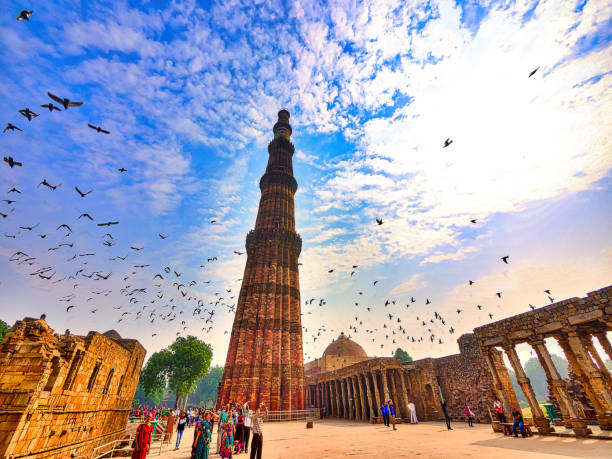


Overview
Standing tall at 73 meters, the magnificent Qutub Minar is one of the most iconic historical landmarks in India, located in the capital city, New Delhi. Built in the early 13th century by Qutb-ud-din Aibak and later completed by his successors, this UNESCO World Heritage Site is a masterpiece of Indo-Islamic architecture.
The minaret is adorned with intricate carvings, Arabic inscriptions, and red sandstone patterns that reflect the grandeur of medieval craftsmanship. Surrounding the tower are other historic structures like the Quwwat-ul-Islam Mosque, Alai Darwaza, and the mysterious Iron Pillar of Delhi, which has stood rust-free for centuries.
Qutub Minar is not only a visual treat for history enthusiasts but also a cultural gem offering insights into India’s rich heritage. A visit here promises stunning photo opportunities, tranquil gardens, and a glimpse into Delhi’s glorious past—making it a must-visit for travelers exploring historical and cultural destinations in India.
Top Destinations
Explore the historic Qutub Minar in New Delhi—a UNESCO site showcasing Indo-Islamic architecture, rich heritage, and stunning ancient monuments.
Free Ask Question?
Q1. Why is Qutub Minar famous?
A1. Qutub Minar is renowned as the tallest brick minaret in the world and a UNESCO World Heritage Site, showcasing stunning Indo-Islamic architecture.
Q2. What is the best time to visit Qutub Minar?
A2. The ideal time is from October to March when the weather is pleasant for sightseeing.
Q3. Are there entry fees for Qutub Minar?
A3. Yes, there is a nominal entry fee for both Indian and foreign visitors, and tickets can be booked online or at the site.
Q4. How to reach Qutub Minar?
A4. It is easily accessible via metro (Qutub Minar station on the Yellow Line), taxis, and local buses in New Delhi.
Q5. What other attractions are near Qutub Minar?
A5. Nearby attractions include Mehrauli Archaeological Park, Lotus Temple, and Humayun’s Tomb, all within a short drive from the site.
